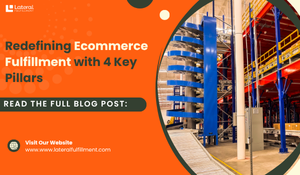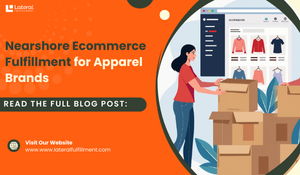Beyond Section 321: The Real Savings of Nearshore Ecommerce Fulfillment
On August 29, 2025, the U.S. officially suspended Section 321. For years, this exemption allowed ecommerce brands to import shipments under $800 duty-free, giving many DTC and B2B sellers a tax break that boosted margins.
The news raised concerns across the industry:
What happens now to import costs?
Is it still worth running fulfillment operations from Mexico?
Should we move everything to a local U.S. 3PL?
The answer is clear: It’s still worth it.
Why? Because nearshore ecommerce fulfillment never depended solely on Section 321. The real advantage lies in its cost structure, scalability, and strategic proximity to the U.S. market.
1. Lower and more reliable labor costs
U.S. warehouses face rising wages and high turnover. In Mexico, specialized ecommerce logistics labor is more affordable and stable — delivering up to 30% operational savings without sacrificing quality.
2. More affordable, flexible warehouse space
Warehouse rent in U.S. logistics hubs (California, Texas, New Jersey) continues to climb. In Tijuana, brands benefit from:
-
Flexible space that adapts to seasonal peaks.
-
Lower storage costs that support larger inventories.
-
Proximity to the U.S. consumer market, reducing transportation costs.
3. Bonded warehouses & IMMEX: A cash flow ally
Section 321 is gone, but Mexico’s fiscal structures remain.
-
IMMEX and bonded warehouse programs allow duties and taxes to be deferred until goods are actually exported to the U.S.
-
This creates a pay-as-you-sell model, aligning tax payments with real sales.
-
The result: improved cash flow to reinvest in growth, marketing, or new product launches.
4. World-class technology at a lower cost
Modern fulfillment isn’t just about storage — it’s about control.
In Tijuana, fulfillment centers offer WMS and ERP platforms integrated with Shopify, Amazon, and leading marketplaces — with EDI capabilities to support wholesale and retail partners.
-
Real-time visibility of inventory and orders.
-
Automation for pick, pack, and ship.
-
Alerts and reporting for faster, data-driven decisions.
5. Faster delivery & better customer experience
Customer experience is as critical as product quality.
-
1–3 day delivery across the U.S. from the border.
-
SLA-driven operations for reliability.
-
Scalable infrastructure for peak seasons (Black Friday, holiday spikes, product launches).
The outcome: satisfied customers who receive their orders quickly, accurately, and consistently.
What really matters
What truly sustains the competitive edge of nearshore fulfillment is:
-
Lower structural operating costs.
-
Greater flexibility to scale.
-
Strategic proximity to the U.S. market.
-
Improved cash flow through deferred duties.
What’s next for ecommerce brands?
Ecommerce didn’t slow down after August 29 — and neither should your growth.
The brands that thrive are those that adapt their logistics strategy to change while focusing on cost, efficiency, and customer experience.
At Lateral Fulfillment, we help brands turn logistics into a competitive advantage with a model that delivers:
-
Reducing labor and warehouse costs
-
Improving cash flow via IMMEX and bonded warehouses
-
Providing fully integrated and scalable technology
-
Enabling 1–3 day shipping across the U.S.
If your brand is looking to reduce costs and optimize fulfillment without relying on Section 321, now is the time to act.
Book a consultative session with our team today and start building a smarter, more sustainable model. → Schedule your session here


